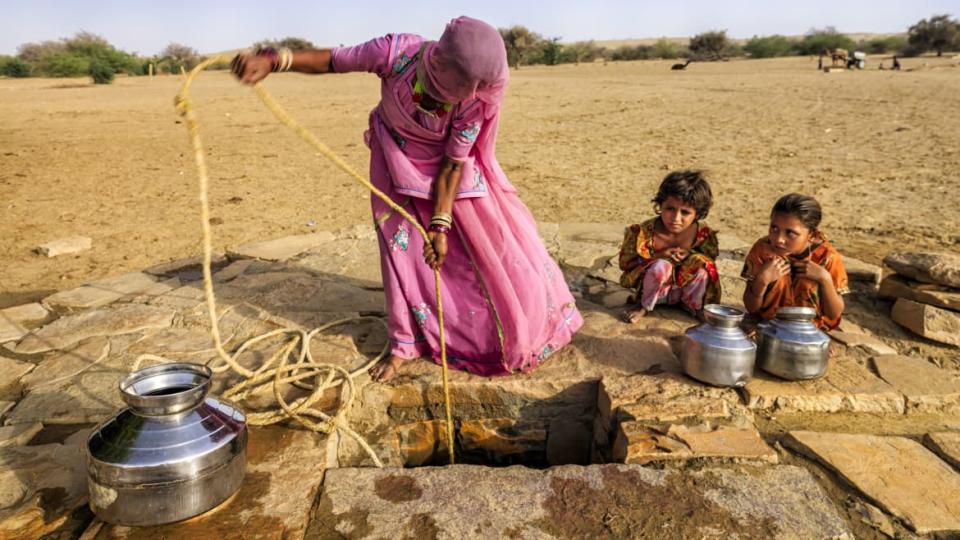Central Asia Might Completely Run Out of Freshwater by 2060

The impact of climate change is typically about extremes—and, sometimes, conflicting ones. On the one hand, upticks in global temperatures are expected to melt more glaciers and ice shelves and lead to a dangerous rise in sea levels. On the other hand, we can also expect more devastating droughts—particularly in some of the most populated regions of the world.
That’s the case in a new study published on August 15 in the journal Nature Climate Change that found that a large swath of Central Asia is at risk of a near total collapse of a major water source by 2060. The impact will be largely driven by weak climate policy and could result in the irreversible depletion of freshwater for several countries.
Specifically, the collapse will occur in the Tibetan Plateau, also known as the “water tower” of Asia. Roughly two billion people throughout the region depend on the Tibetan Plateau for their water needs. If bold action isn’t taken to reverse current global warming trends, we could witness the near-total collapse of water supply for Northern India, Kashmir, and Pakistan; and the total collapse of water for Central Asia and Afghanistan.
“The prognosis is not good,” Michael Mann, an atmospheric science researcher at Penn State and co-author of the study, said in a press release. “In a ‘business as usual’ scenario, where we fail to meaningfully curtail fossil fuel burning in the decades ahead, we can expect a near collapse—that is, nearly 100 percent loss—of water availability to downstream regions of the Tibetan Plateau.”
He added, “I was surprised at just how large the predicted decrease is even under a scenario of modest climate policy.”
The study’s authors said that the Tibetan Plateau’s terrestrial water storage (TWS)—a term to describe above and below ground freshwater—hasn’t been well researched despite servicing a large region of the world. So the team looked at satellite- and ground-based measurements of the area’s water supply and discovered that the TWS in the Plateau has drastically dropped by roughly 15.8 gigatons a year from 2002 to 2020.
The Mad Plan to Save Earth by Flooding It With Phytoplankton
The researchers then used this data to project future TWS with modeling that assumed a moderate amount of carbon emissions. They discovered that Central Asia and Afghanistan would experience 119 percent decline in freshwater, while North India, Kashmir, and Pakistan would see a 79 percent decline. This would result in catastrophic water insecurity for the billions of people who live in the region.
There is hope, however. Mann specifically pointed to the recently passed Inflation Reduction Act, spearheaded by the Biden administration, as a way to “limit the additional warming and associated climate changes behind the predicted collapse of the Tibetan Plateau water towers.” However, more work ultimately needs to be done beyond it.
“But even in a best-case scenario, further losses are likely unavoidable,” Mann said, “which will require substantial adaptation to decreasing water resources in this vulnerable, highly populated region of the world.”
Got a tip? Send it to The Daily Beast here
Get the Daily Beast's biggest scoops and scandals delivered right to your inbox. Sign up now.
Stay informed and gain unlimited access to the Daily Beast's unmatched reporting. Subscribe now.

 money
money 